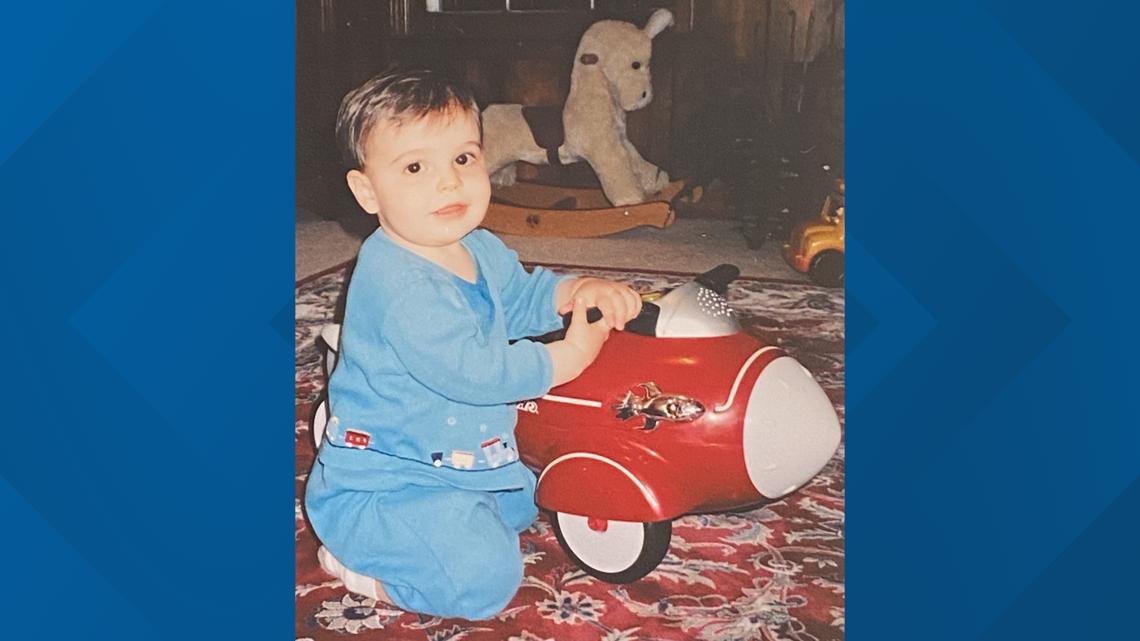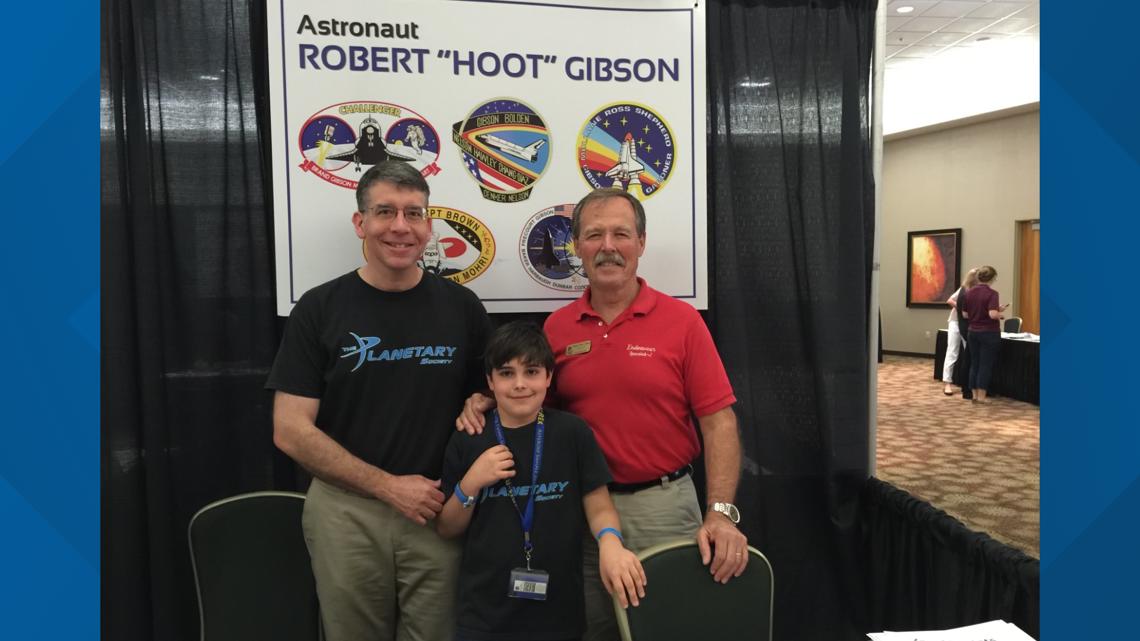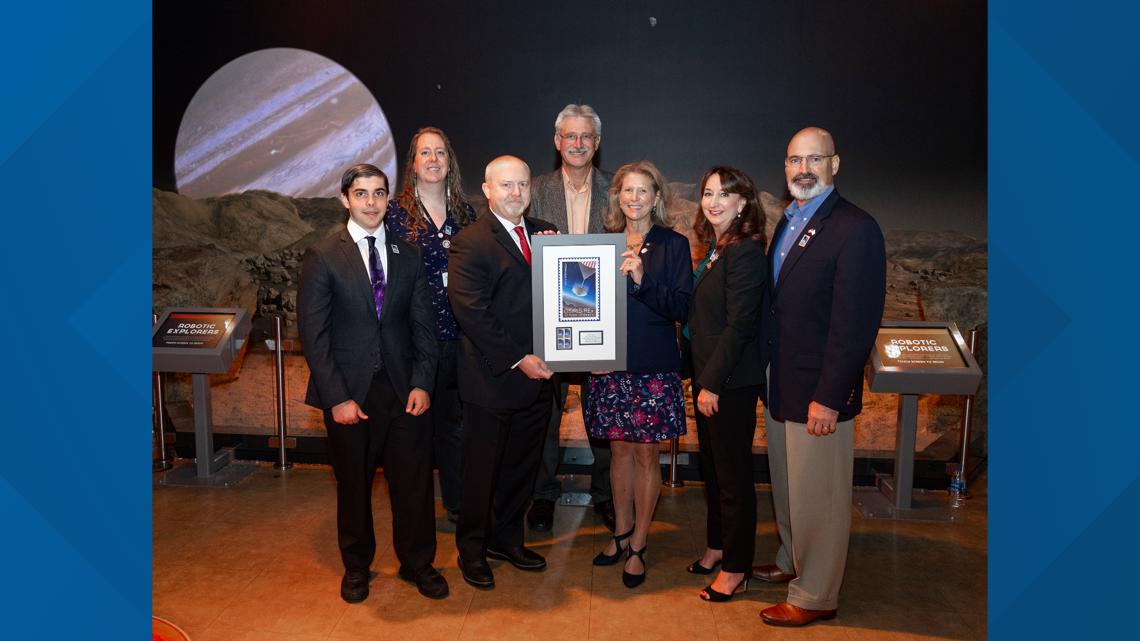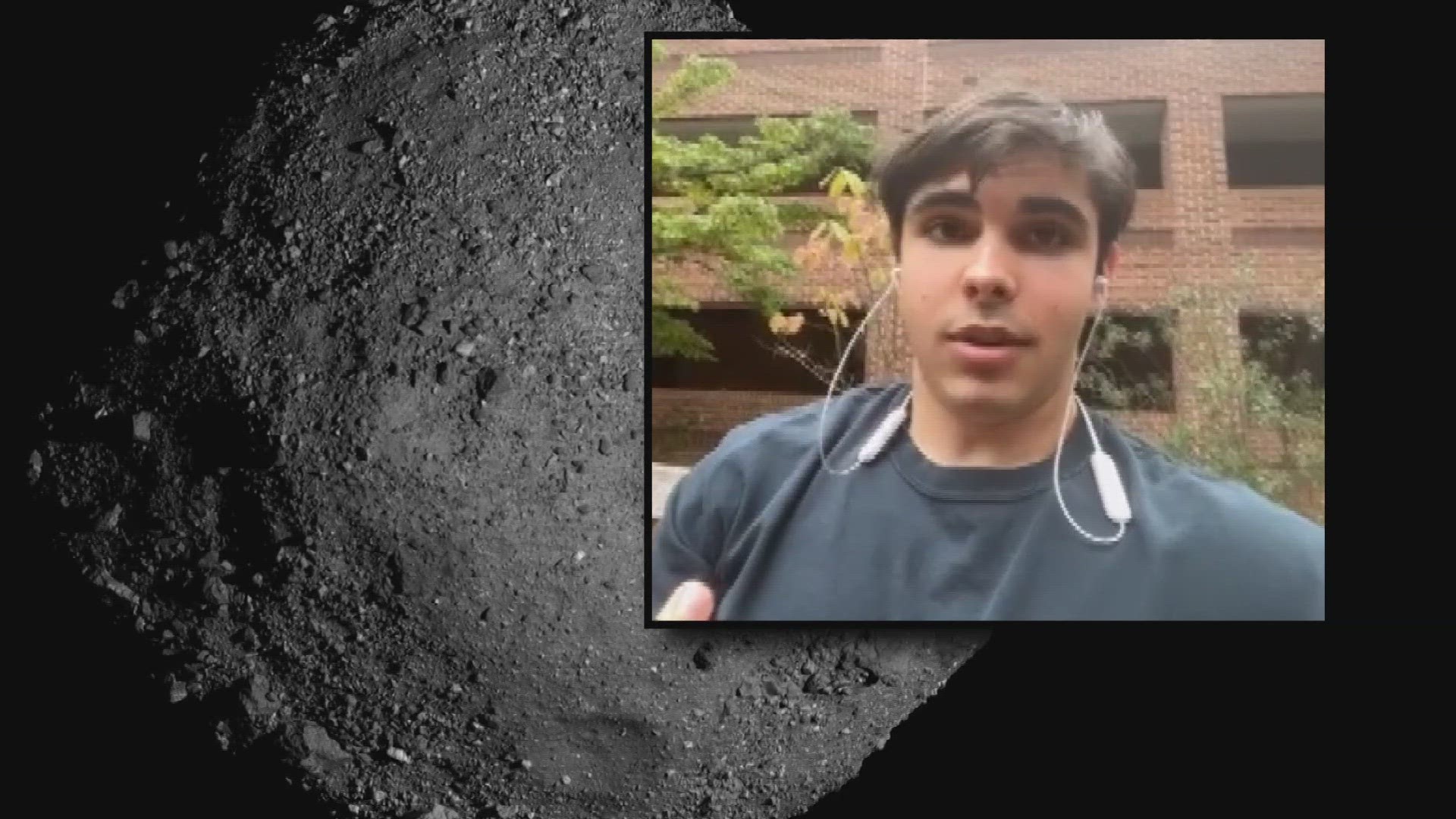RALEIGH, N.C. — There is a 4.5-billion-year-old carbon-rich asteroid drifting through deep space that may hold the secrets to life on Earth and how our solar system was first formed.
It may also hold the secret to success for one 19-year-old college student from North Carolina.
Mike Puzio first heard about the mysterious asteroid in 2013.
"I grew up on 'Star Wars' and 'Star Trek,'" he said. "I might not have realized it as a kid, but space was always sort of my thing."
Puzio's childhood was surrounded by space and rockets, but his life was really launched in the right direction in 2013, when NASA made a huge announcement. For the first time, they were going to collect a piece of an asteroid and bring it back to Earth.


But the space rock they chose, which was designated Asteroid 1999RQ36, was in need of a more media-savvy name. So the Planetary Society held a contest.
“And I figured it would be appropriate to name the asteroid Bennu because it would be returning to Earth,” Puzio said.
Puzio said he already knew that the spacecraft that would bring the asteroid bits back to Earth was being built in Colorado and Lockheed Martin Aerospace had already named it Osiris Rex.
In a quick Google search, he learned that in Egyptian mythology, the deity Osiris came to Earth in the form of a bird named Bennu.
Puzio’s Bennu idea was selected out of 8,000 entries and officially adopted by NASA.
“Honestly, it pretty much changed the trajectory of my life,” he said. "And I got to meet so many incredible people that I want to be just like."


Suddenly, 9-year-old Mike Puzio was shaking hands with astronauts.
"Hoot Gibson looks right at me and says please tell me about how your life is going," Puzio said. "Every astronaut I've met has gone out of their way to support me and encourage me."


He even stood with his idol Bill Nye the Science Guy on the day OSIRIS-Rex set sail for Bennu in 2016.
"His excitement and enthusiasm for science might be even more sensational than in his show," he said. "I remember he told me at the OSIRIS launch to put my camera away and leave the photos to the professionals. 'I want you to just absorb this amazing moment.'"
Puzio said that Atlas V rocket launch was one of the best experiences of his life. And the whole asteroid naming experience inspired him to reach for the stars. He is now studying mechanical engineering at North Carolina State University and his goal is to work in space.
“I see astronauts as heroes because they go out there and risk their lives for the betterment of humanity,” he said. "I feel like it's very important that they get recognized as such."
The OSIRIS-REx Stamp
Puzio helped the U.S. Postal Service dedicate an OSIRIS-REx stamp in September. The stamp's main image shows the return capsule containing the pieces of Bennu parachuting down through Earth's atmosphere -- the final stage of the historic seven-year mission.


Bennu's reveal
After a successful return to Earth in September, NASA is planning a reveal on Wednesday to show off the pieces of Bennu to the public for the first time, and they said there will even be preliminary results from their initial analysis.
RELATED: NASA's Osiris-REx spacecraft returns sample of asteroid to Earth thanks to Colorado scientists
Bennu's Earth impact potential
Bennu is considered a Near-Earth Object because it makes one orbit around the sun every 1.2 years and makes a close approach to Earth every six years, although its exact distance from Earth during these approaches varies.
It could even come close enough to hit Earth in the year 2182, although scientists give it a less than 1% chance of actually happening that year.
NASA said Bennu's potential impact with Earth is not the main reason for the OSIRIS-REx mission, but the information gained could one day be very beneficial.
Puzio agrees.
"To have some knowledge about what Bennu is exactly composed of will be invaluable, or just to get a better understanding of it through the sample that we've returned can be helpful with calculating the orbital mechanics required to someday redirect the asteroid if need be," he said.
The OSIRIS spacecraft, after dropping off its sampling canister on Earth, has now assumed a new name -- OSIRIS-APEX -- and will be moving on to study another near-Earth asteroid.
It will not be collecting another sample, but it will be using remote sensors to analyze the asteroid Apophis. That asteroid, however, is not expected to come close enough to Earth to someday make impact.
SUGGESTED VIDEOS: Feature stories

